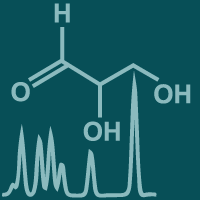Topic Menu
► Topic MenuTopic Editors



Proteomics and Metabolomics in Biomedicine
Topic Information
Dear Colleagues,
The pivotal role of omics technologies and their applications in every field of medical research, or in the diagnostic context, has almost been established. During the omics revolution, which has occurred over the last 10 years, each omics has instituted an independent branch of knowledge, and many applications have been developed in this time, providing crucial insights into the most disparate fields of science. Nowadays, it has become even more common to integrate different omics data types to magnify the evidence related to various diseases, with the aim of discovering their molecular bases or finding potential treatments. Among the omics disciplines, proteomics and metabolomics strategies, in particular, can provide a precise fingerprint of a biochemical status and can rapidly identify the responses of an organism, even when subtle fluctuations occur. As well as taking the aforementioned considerations into account, this topic aims to collect papers that particularly focus on the application of proteomics and metabolomics strategies in the context of biomedicine or related fields. The interplay among proteins, metabolites, lipids, interactors, and molecule modifications is able to finely regulate a plethora of cellular processes, including metabolic pathways, growth processes, etc.; therefore, a broad range of proteomics- and metabolomics-derived disciplines will also be considered. These disciplines include, but are not limited to, the following: interactomics, analysis of post-translational modifications (PTMs), proteogenomics, lipidomics, fluxomics, data analysis, bioinformatics, and single-cell omics. Furthermore, papers describing the development of strategies for sample preparation, mass spectrometry analysis, and computational elaboration are welcome, in order to provide further knowledge of proteomics and metabolomics for a broader audience. All the work collected in this topic will certainly provide new insights into the molecular aspects of pathophysiology and biochemistry in health and disease, and will have important implications in systems biology, being useful for basic science and clinical applications.
Dr. Michele Costanzo
Dr. Marianna Caterino
Dr. Lucia Santorelli
Topic Editors
Keywords
- proteomics
- metabolomics
- interactomics
- protein–protein interactions
- post-translational modifications
- lipidomics
- systems biology
- computational omics
- single-cell omics
- integrated omics
Participating Journals
| Journal Name | Impact Factor | CiteScore | Launched Year | First Decision (median) | APC |
|---|---|---|---|---|---|

Biomedicines
|
3.9 | 5.2 | 2013 | 15.3 Days | CHF 2600 |

International Journal of Molecular Sciences
|
4.9 | 8.1 | 2000 | 18.1 Days | CHF 2900 |

Metabolites
|
3.4 | 5.7 | 2011 | 13.9 Days | CHF 2700 |

Molecules
|
4.2 | 7.4 | 1996 | 15.1 Days | CHF 2700 |

Proteomes
|
4.0 | 6.5 | 2013 | 34.2 Days | CHF 1800 |

MDPI Topics is cooperating with Preprints.org and has built a direct connection between MDPI journals and Preprints.org. Authors are encouraged to enjoy the benefits by posting a preprint at Preprints.org prior to publication:
- Immediately share your ideas ahead of publication and establish your research priority;
- Protect your idea from being stolen with this time-stamped preprint article;
- Enhance the exposure and impact of your research;
- Receive feedback from your peers in advance;
- Have it indexed in Web of Science (Preprint Citation Index), Google Scholar, Crossref, SHARE, PrePubMed, Scilit and Europe PMC.

